Motivation:
We are currently in an era when astronomical surveys are capable of scanning large portions of the sky at relatively high cadence, producing vast amounts of data. To date we have discovered more than 1.2 million small bodies (e.g., asteroids, comets, centaurs and trans-Neptunian objects) in our Solar System and the rate of discovery will increase exponentially in the next few years when even more data-intensive surveys like the Rubin Observatory’s Legacy Survey of Space and Time (LSST) and NASA’s Near-Earth Object Surveyor Mission are finally completed and fully operational. For example, LSST expects to produce 20TB of data per night and measure the orbits of 6 million bodies in the Solar System alone. This expected deluge of new discoveries in the near future is likely to exacerbate follow-up deficiencies but will provide opportunities for new large-scale characterization approaches.
In August 2024 we will have a 2-day focus meeting to discuss multiple aspects of follow-up characterization of the large number of detections of known and previously undiscovered small objects in our Solar System from existing and planned, large, all-sky surveys. While the meeting will focus on small bodies, the topics covered will be diverse such as observational techniques, instrumentation, and large-data handling. With these topics we hope to attract attendees with a range of expertise and thereby better optimize science outcomes from the surveys. Importantly, the meeting will expose local attendees to global cutting-edge research and techniques, which will hopefully grow and enhance the field of planetary science in the African Astronomical community.
Key Topics:
- Objects – small Solar System bodies (SSSBs): asteroids, Centaurs, comets, Trans-Neptunian Objects (TNOs) etc.
- Techniques – occultations, spectroscopy, astrometry, photometry, radar, radiometry of SSSBs
- Preparation for the large number of discovery alerts of SSSBs anticipated from modern surveys
- Instrumentation required for automated follow-up observations of SSSBs
Invited Speakers:
- Myung-Jin Kim (Korea Astronomy and Space Science Institute)
Talk Title: NSOS-α: The First Korean Asteroid Survey Telescope - Javier Licandro (Instituto de Astrofísica de Canarias)
Talk Title: Enhancing LSST Solar System Discoveries: The Critical Role of 10-m Class Telescope Follow-ups - Elisabetta Dotto (INAF-Osservatorio Astronomico di Roma)
Talk Title: Fast-reaction follow-up and global networks of telescopes. - Federica Spoto (Minor Planet Center)
Talk Title: Minor Planet Center: preparing for the increased flux of discoveries expected from LSST - Noemí Pinilla-Alonso (Florida Space Institute)
Talk Title: Dawning of a New Era: Understanding Ices in the Solar System with the James Webb Space Telescope - Henry Hsieh (Planetary Science Institute)
Talk Title: Rapid detection and characterisation of active small bodies - Zeljko Ivezic (University of Washington)
Talk Title: Rubin’s LSST: opportunities for small-body science from a large-scale Solar System survey - Milagros Colazo (Adam Mickiewicz University)
Talk Title: Large photometric database and application to asteroid data from multiple space- and ground-based surveys. - Luca Conversi (Near-Earth Object Coordination Centre)
Talk Title: NEOMIR: ESA’S SPACE-BASED NEO INFRARED MISSION
